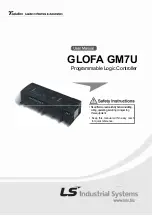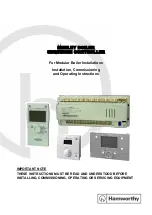
LPC2119/2129/2292/2294 Memory Addressing
37
Philips Semiconductors
Preliminary User Manual
LPC2119/2129/2292/2294
ARM-based Microcontroller
Memory Re-Mapping
In order to allow for compatibility with future derivatives, the entire Boot Block is mapped to the top of the on-chip memory space.
In this manner, the use of larger or smaller flash modules will not require changing the location of the Boot Block (which would
require changing the Boot Loader code itself) or changing the mapping of the Boot Block interrupt vectors. Memory spaces other
than the interrupt vectors remain in fixed locations. Figure 6 shows the on-chip memory mapping in the modes defined above.
The portion of memory that is re-mapped to allow interrupt processing in different modes includes the interrupt vector area (32
bytes) and an additional 32 bytes, for a total of 64 bytes. The re-mapped code locations overlay addresses 0x0000 0000 through
0x0000 003F. A typical user program in the Flash memory can place the entire FIQ handler at address 0x0000 001C without any
need to consider memory boundaries. The vector contained in the SRAM, external memory, and Boot Block must contain
branches to the actual interrupt handlers, or to other instructions that accomplish the branch to the interrupt handlers.
There are three reasons this configuration was chosen:
1. To give the FIQ handler in the Flash memory the advantage of not having to take a memory boundary caused by the re-
mapping into account.
2. Minimize the need to for the SRAM and Boot Block vectors to deal with arbitrary boundaries in the middle of code space.
3. To provide space to store constants for jumping beyond the range of single word branch instructions.
Re-mapped memory areas, including the Boot Block and interrupt vectors, continue to appear in their original location in addition
to the re-mapped address.
Details on re-mapping and examples can be found in System Control Block on page 48.















































